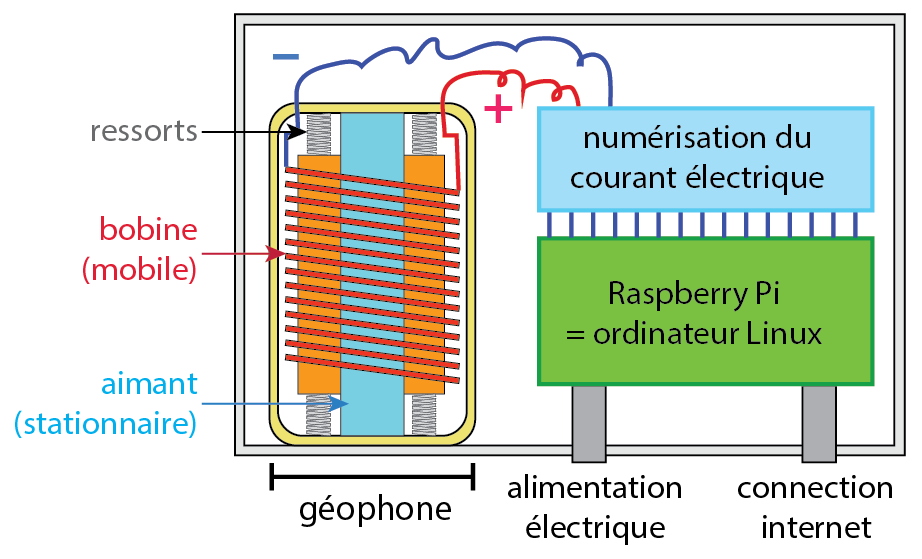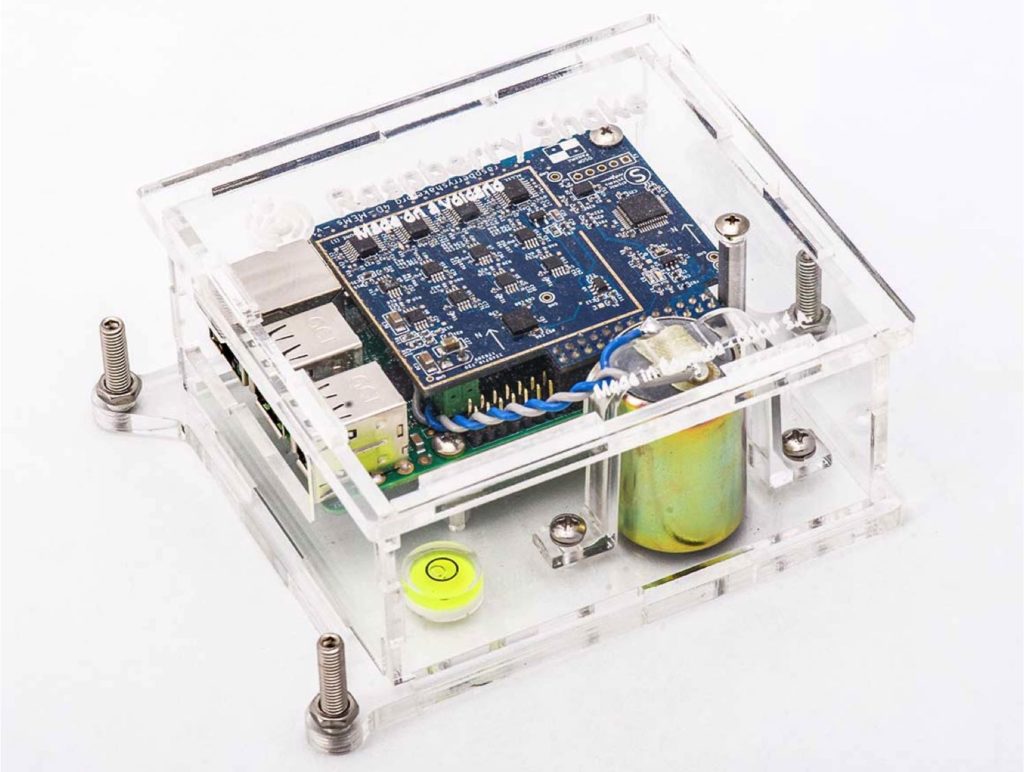A seismometer is a device that measures ground vibrations with a very high sensitivity. These vibrations are recorded by a sensor called a “geophone”. It consists of a coil of copper wire mounted on springs with a magnet in the middle. The movement of the coil around the magnet when the ground vibrates induces an electric current. This electrical current is analysed by an electronic card and converted into a seismogram.

The OSMOSE project uses low-cost “Raspberry Shake” seismometers assembled by the OSOP company in Panama (photo below). They are less efficient than their “professional” counterparts used in seismological observatories, but their low maintenance makes them particularly attractive for acquiring seismological data in conditions where access to the field or technical skills cannot guarantee this maintenance.

The data from the Raspberry Shake seismometers are stored on a Raspberry Pi microcomputer which manages the internet connection and sends the data to a computer where the seismologists can use them. By using the data (= seismograms) of several Raspberry Shake seismometers, or more “professional” ones, it is possible to locate earthquakes even of very low magnitude, not felt by the population — and there are many!